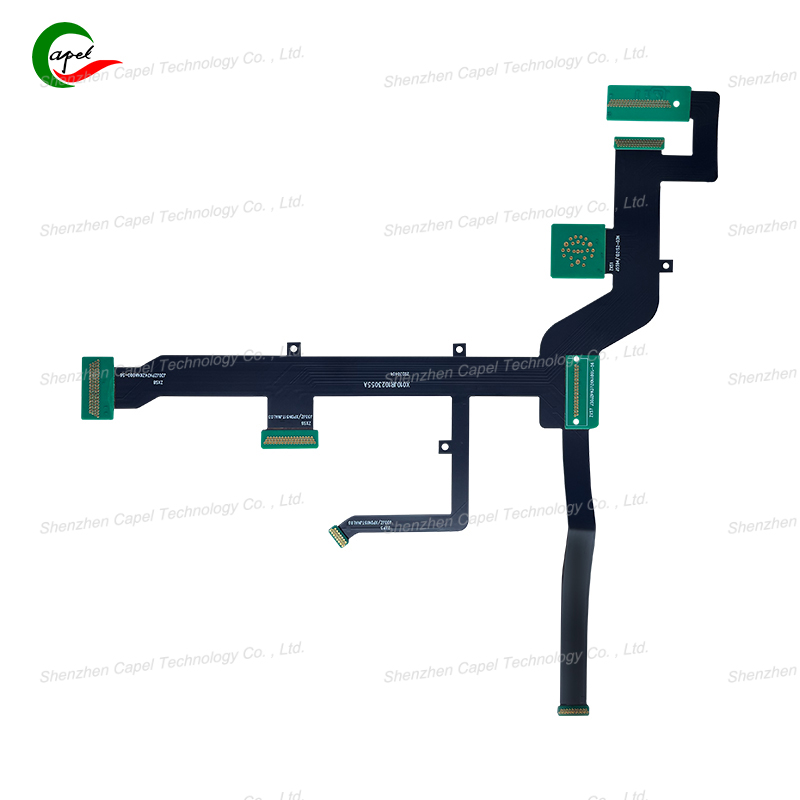Date: 2025-08-27
Introduction: The Unseen Hero in Your Smart Home
Imagine your smart home at night. A window sensor silently detects a draft, adjusting the thermostat to save energy. A motion sensor in the hallway, powered for months on a tiny battery, turns on a gentle light path without you ever fumbling for a switch. These devices work so seamlessly they become invisible—a true mark of great technology. But behind this magic lies an unsung hero: the Rigid-Flex Printed Circuit Board (PCB). This engineering marvel is the key to balancing the critical demands of low power consumption and rock-solid stability in modern smart home sensors.
Part 1: The "What" - Demystifying the Rigid-Flex PCB
A Rigid-Flex PCB is a hybrid circuit board. It beautifully merges traditional rigid sections, where components like chips and sensors are mounted, with thin, flexible polymer ribbons that connect them. Think of it like the human spine: the rigid vertebrae (the boards) protect the delicate spinal cord (the components), while the flexible joints (the flex circuits) allow for movement and compact packaging.
This unique structure is a game-changer for sensor design. Unlike a board that is purely rigid, a Rigid-Flex PCB can be folded and shaped to fit into impossibly slim and irregular spaces—like inside a door sensor, a wearable health monitor, or a sleek, minimalist temperature hub.
Part 2: The "Why" - The Smart Home Sensor's Dilemma
Smart home sensors face a tough dilemma:
Low Power Consumption: Most sensors are wireless and battery-powered. No one wants to change batteries every month. They must sip power frugally to last for years, often relying on sleep modes that use mere microamps of current.
Uncompromising Stability: These devices must work flawlessly, 24/7. A false alarm from a motion sensor or a failure in a smoke detector is unacceptable. They must withstand constant temperature fluctuations, subtle vibrations, and even minor physical stress without failing.
Traditional wiring or connectors between multiple rigid boards are weak points. They are prone to fatigue, corrosion, and failure over time, jeopardizing both power efficiency (through poor connections) and long-term stability.
Part 3: The "How" - The Balancing Act of Rigid-Flex
This is where Rigid-Flex PCBs shine, mastering the balance between power and reliability.
Strategy 1: Conquering Low Power Consumption
Miniaturization: By folding the circuitry into a 3D shape, Rigid-Flex allows for incredibly compact designs. Smaller devices require smaller batteries, directly reducing the total power budget.
Reduced Interconnects: Eliminating bulky connectors and soldered wires between boards drastically reduces parasitic capacitance and resistance. This means less power is lost as heat during transmission, and more energy is dedicated to the sensor's core functions.
Optimized Layout: Designers can create a more logical and efficient component layout. Power-hungry chips can be placed on a rigid section for heat dissipation, while the flex section can connect directly to a remote sensor element, shortening the signal path and saving energy.
Strategy 2: Ensuring Rock-Solid Stability
Fewer Failure Points: A single, continuous Rigid-Flex assembly has up to 60% fewer connectors and solder joints than a traditional multi-board setup. This dramatically improves reliability by eliminating the most common points of failure in electronic systems.
Superior Durability: The flexible layers are designed to endure hundreds of thousands of bending cycles. A door/window sensor opening and closing dozens of times a day will not fatigue a Rigid-Flex PCB. It is also highly resistant to shock and vibration—common in everyday home environments.
Environmental Resilience: These boards can be manufactured with robust conformal coatings, making them resistant to humidity, dust, and mild chemical exposure, ensuring performance in demanding locations like garages or kitchens.
A Real-World Example: The Smart Door Sensor
Consider a compact smart door/window sensor. A Rigid-Flex PCB allows one rigid segment to house the main processor and battery, while a thin flex circuit snakes to a second rigid segment holding the magnetic reed switch. This design:
Saves Space: Enables an ultra-slim, discreet profile.
Saves Power: The efficient connection ensures minimal power loss to the switch.
Enhances Reliability: With no wires to break or connectors to loosen, the sensor can endure a decade of daily openings and closings without fail.
Conclusion: The Foundation of a Truly Intelligent Home
The ultimate goal of a smart home is not just intelligence, but effortless and dependable automation. Rigid-Flex PCBs are the silent guardians making this possible. By enabling smaller, more robust, and incredibly energy-efficient designs, they provide the foundational stability upon which trust in smart technology is built. The next time your home anticipates your needs without you noticing, remember the tiny, flexible circuit board working tirelessly in the background—masterfully balancing the act of low power and unwavering stability.
Founded in 2009, our company has deep roots in the production of various circuit boards. We are dedicated to laying a solid electronic foundation and providing key support for the development of diverse industries.
Whether you are engaged in electronic manufacturing, smart device R&D, or any other field with circuit board needs, feel free to reach out to us via email at sales06@kbefpc.com. We look forward to addressing your inquiries, customizing solutions, and sincerely invite partners from all sectors to consult and collaborate, exploring new possibilities in the industry together.
Capel manufacturing PCBs since 2009. Professional technology and high-precision Printed Circuit Boards involved in Medical, IOT, UAV, Aviation, Automotive, Aerospace, Industrial Control, Artificial Intelligence, Consumer Electronics etc..